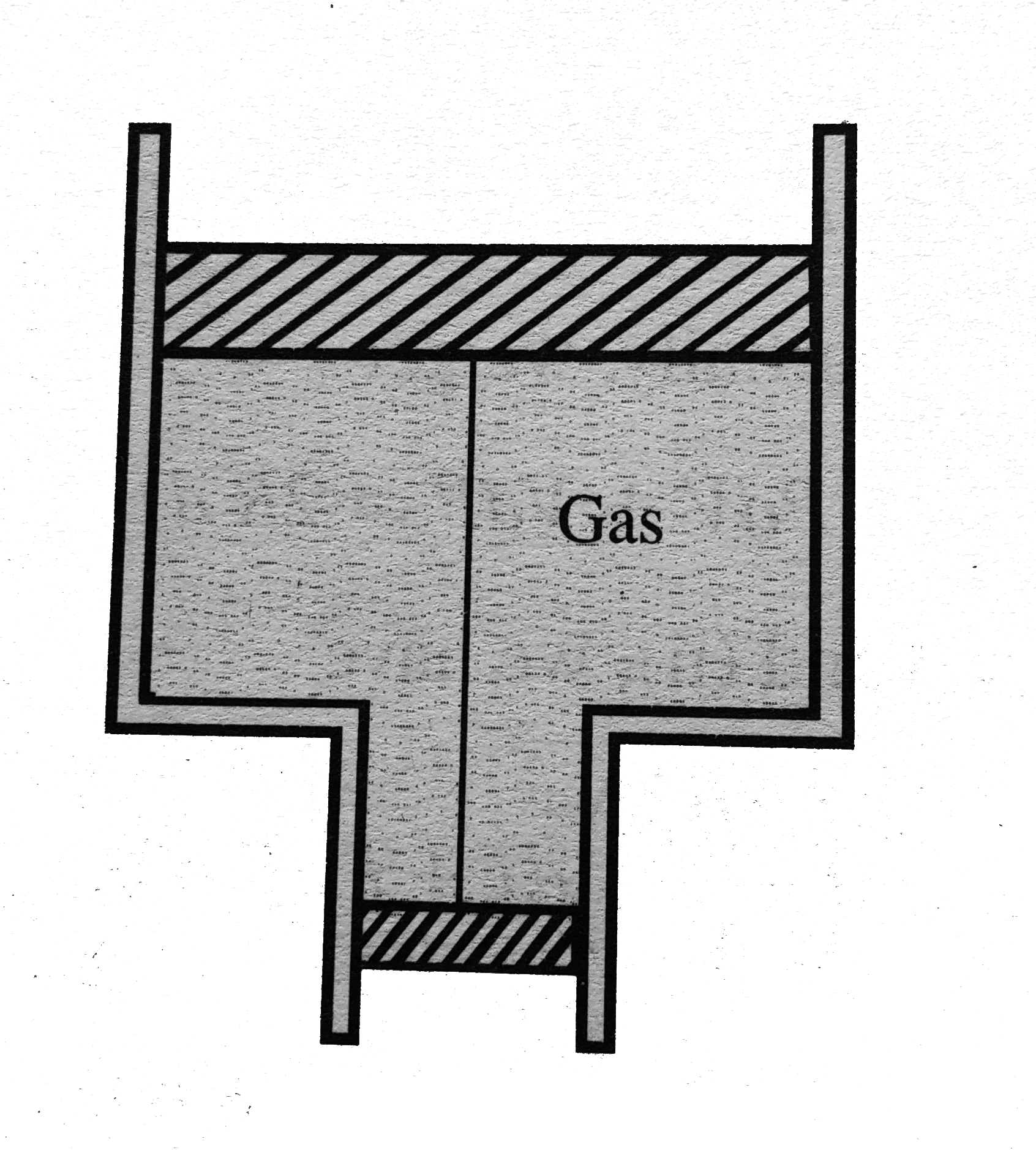The diagram shows a hydraulic system in equilibrium. The cross-sectional areas of the smaller piston and the larger piston are Scm2 and 5Scm2 respectively.

The mass M required to balance the load of 50 kg is
2kg
5 kg
8 kg
10 kg
The correct Answer is:D
In order to balance the load of 50 kg, we need to make the pressure same on both the sides.
So, F1A1=F2A2
⇒F1=A1F2F2 [ ∵ Force = weight of the mass]
or M=S5S×50=10kg
Topper's Solved these Questions
Similar Questions
An object of weight 500kgwt is lifted by using a hydraulic press. The radii of the cross sections of the pump piston and press piston are 10 cm and 20 cm, respectively. Calculate the effort required to lift the object. Calculate the displacement of the load if the effort is moved through a distance of 20 cm.
View SolutionAn object of weight 500kgwt is lifted by using a hydraulic press. The radii of the cross sections of the pump piston and press piston are 10 cm and 20 cm, respectively. Calculate the effort required to lift the object. Calculate the displacement of the load if the effort is moved through a distance of 20 cm.
View Solution
Knowledge Check
Two syringes of different cross-section (without needle filled with water are connected with a tightly fitted rubber tube filled with water. Diameters of the smaller piston an larger piston are 1cm and 3cm respectively. If a force of 10N is applied to the smaller piston then the force exerted on the larger piston is
A30NB60NC90ND100NA pipe of non uniform cross section has two distinct section 1 and 2 with areas 2cm2 and 4cm2 respectively. If the velocity of flowing liquid at section 1 is 5cm/s, determine the velocity at section 2.
Av2=5cm/sBv2=2cm/sCv2=25cm/sDv2=2.5cm/s
The cross-section of two piston in hydraulic press are 2cm2and150cm2 respectivley . Calculate the minimum force required to support a weight of 2000kg wt on the broader face of the press.
View SolutionIn a hydraulic press, the area of smaller and larger pistons are 5cm2and20cm2, respectively. Calculate the weight which can be raised by larger piston if a force of 100 kgf is applied on smaller piston.
View SolutionIn a hydraulic press used for lifting heavy loads, the diameters of smaller and larger pistons are 2 cm and 5 cm, respectively. If the smaller piston is pushed in through 5 cm, then by how much distance will the larger piston move out?
View SolutionTwo syringes of different cross-sections (with out needles) filled with water are connected with a tightly fitted rubber tube filled with water. Diameters of the smaller pison and larger pistom are 1.0cm and 3.0 cm respectively.
(a) Find the force on the larger piston when a force of 10N is applied to the smaller piston.
(b) The smaller piston is pused in through 6.0 cm, much does the larger piston move out?
View SolutionIn an arrangement similar to a hydraulic lift, the diameters of smaller and larger pistons are 1.0 cm and 3.0 cm respectively. What is the force exerted on the larger piston when a force of 10 N is applied to the smaller piston?
View SolutionA smooth vertical tube having two different cross sections is open from both the ends but closed by two sliding pistions as shown in Fig. and tied with an inextensible string. One mole of an ideal gas is enclosed between the piston The difference in cross-sectional areas of the two pistons is given ΔS. The masses of piston are m1 and m2 for larger and smaller one, respectively. Find the temperature by which tube is raised so that the pistons will be displaced by a distance l. Take atmospheric pressure equal to P0

View Solution
